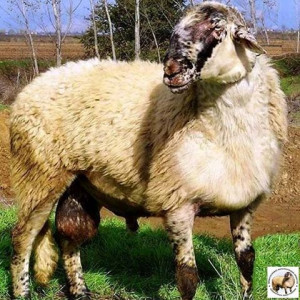
Establishment of an ERFP Working Group to support AnGR Cryopreservation Initiatives (CRYO-WG)
project coordinator: Sipke-Joost Hiemstra, NC Netherlands
project duration: since 2007
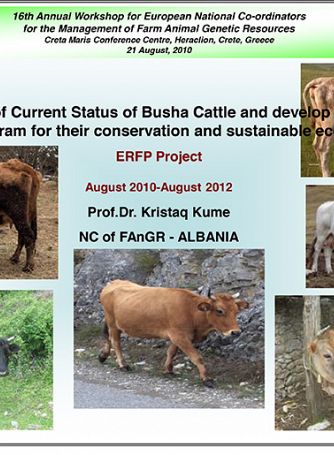
Evaluation of Current Status of Busha Cattle and develop a regional breeding program for their conservation and sustainable economic use
project coordinator: Kristaq Kume
project duration: 2010-2013
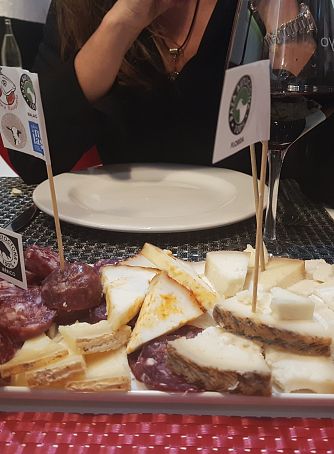
Exchange of recommendations of national advisory bodies on AnGR
Part of the work of the Working Group “In situ conservation and valorisation of AnGR” was to compile relevant documents from national advisory bodies about in situ conservation. A first set of documents can be found below, further documents will be added as new inputs will be sent from the National Coordinators.
- Development plan of the National Program for the conservation, improvement and promotion of livestock breeds (https://www.mapa.gob.es/es/ganaderia/temas/zootecnia/Plan%20Nacional%20Ingles%20Red_tcm30-119131.pdf, source: Zootechnical team of the General Subdirection of Means of Production of the Ministry of Agriculture, fisheries and food of Spain)
- a. Procedure for the inclusion of a breed in the Spanish catalogue of official livestock breeds (source: Zootechnical team of the General Subdirection of Means of Production of the Ministry of Agriculture, fisheries and food of Spain) Procedure PDF document and b.Criteria for considering a breed at risk of endangerment in the official catalogue of livestock Criteria PDF document
- Agrobiodiversity in Southeast Europe – Assessment and Policy Recommendations (source: Rivera F., Gaugitsch,H., Bartel A., Schindler S.) Agrobiodiversity South East PDF document
- Animal genetic resources and animal diseases – need for action for prevention and in the case of an acute disease outbreak (source: German Advisory Board on Animal Genetic Resources) Animal diseases PDF document
- Status, Problems and the Actions Needed on Conservation-Breeding Programmes for Indigenous Farm Animal Breeds Threatened by Extinction (source: German Advisory Board on Animal Genetic Resources) Actions Needed Conservation PDF document
- Activating Consumers for the Conservation of Biodiversity in Agriculture! (source: Scientific Advisory Board on Biodiversity and Genetic Resources at the Federal Ministry of Food and Agriculture of Germany) Activating Consumers PDF document
GUIDELINES FOR THE DEVELOPMENT OF MATERIAL ACQUISITION AGREEMENTS (MAA)
The aim of this document is to help Genebanks in the process to develop MAA for Material intended to be stored in a Genebank for conservation, sustainable use, research and development of Animal Genetic Resources. These guidelines provide a potential set of elements, which could be incorporated in a MAA.
They could be considered as “tool box” to facilitate process of developing own MAA to be used by a given Genebank.
GUIDELINES FOR THE DEVELOPMENT OF MATERIAL TRANSFER AGREEMENT (MTA) FOR CONSERVATION AND BREEDING
The aim of this document is to help Genebanks in the process to develop a MTA for Material intended to be employed for conservation and breeding. These guidelines provide a potential set of elements, which could be incorporated in the MTA. They could be considered as “tool box” to facilitate process of developing own MTA to be used by a given Genebank.
GUIDELINES FOR THE DEVELOPMENT OF THE MATERIAL TRANSFER AGREEMENT (MTA) FOR RESEARCH
The aim of this document is to help the Genebanks in the process to develop a MTA for Material intended to be employed for conservation and breeding. These guidelines provide a potential set of elements, which could be incorporated in a MTA. They could be considered as “tool box” to facilitate process of developing own MTA to be used by a given Genebank.

HERITAGESHEEP website
Heritage Sheep Breeds are defined as regional breeds, playing an important role in local culture and the rural economy, adapted to their environments and helping to sustain the countryside.
A EU project called HERITAGESHEEP was devoted to help the conservation the genetic resources of these breeds during the years 2008/2010.
Inputs from this project are available on this website: https://www.heritagesheep.net/
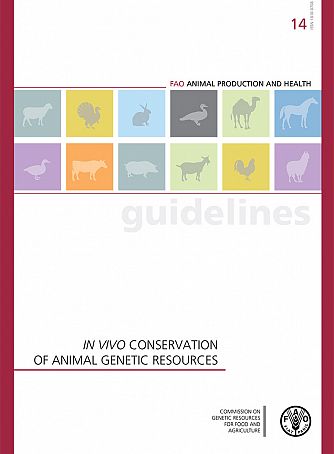
In vivo conservation of animal genetic resources
21 September 2017
In vivo conservation encompasses a range of actions that can be taken to ensure the survival of livestock breeds or populations that are threatened with extinction.

Leaflet on the AnGR strategy
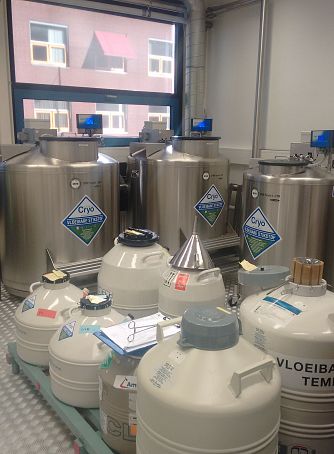
Livestock Genebanks Peer Reviews
Observations and conclusions based on one cycle of three animal genebanks peer reviews
Within the H2020 GenResBridge project a system of peer reviews has been set up aiming to improve the quality of European genebanks by having the experts of these genebanks visit each otheR. Reviewers provide recommendations to the hosting genebank.
A pilot of these genebank peer reviews is being organised in the second half of 2021, involving the French national Cryobank the Dutch national genebank at Centre for Genetic Resources, the Netherlands and the Slovenian national genebank ,Slovenia focussing on the animal genetic resources (AnGR) collections.
The reviews were held in 2021 on September 13th and 14th in France, September 15th and 16th in the Netherlands and on October 5th and 6th in Slovenia.
The global peer review report is available below, and the invidual country reports here:
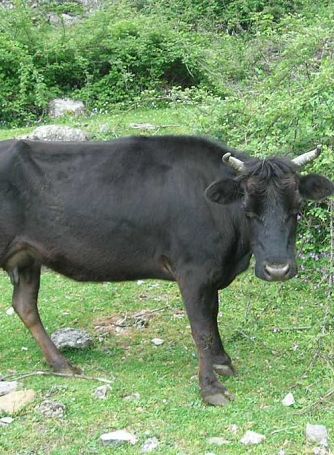
Molecular caracterisation as a tool for breed conservation - example of the Busha cattle in Serbia
The molecular caracterisation of a breed requires both time and significant financial resources. In Serbia, a multidisciplinary team of experts from IMGGI, the Institute of Animal Husbandry (IAH), the Faculty of Agriculture of the University of Belgrade (FA UB) and the Faculty of Veterinary Medicine of the University of Belgrade (FVM UB) dedicated a specific project for the analysis of an emblematic breed, the Busha cattle. The final study was published in 2022 and can be seen as a model for the improvement of the conservation of AnGR by means of molecular genetic characterization.
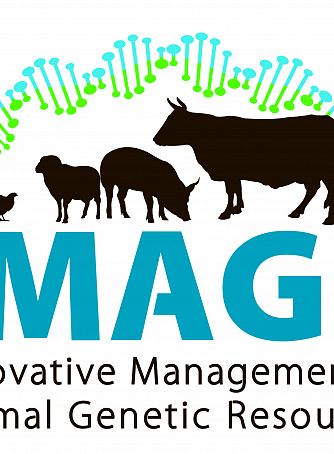
Outcomes of the H2020 IMAGE project
The aim of IMAGE was to enhance the use of genetic collections and to upgrade animal gene bank management. IMAGE will further develop genomic methodologies, biotechnologies, and bioinformatics for a better knowledge and exploitation of animal genetic resources.
The project ended in February 2020 and ERFP participates to broadcast its numerous outcomes through its website.
List of articles in peer review journals
Outcomes of the Dialogue Forum
Youtube Channel of the IMAGE project
Guidelines for the management of gene banks
Inventory and mapping of European animal genetic collections

